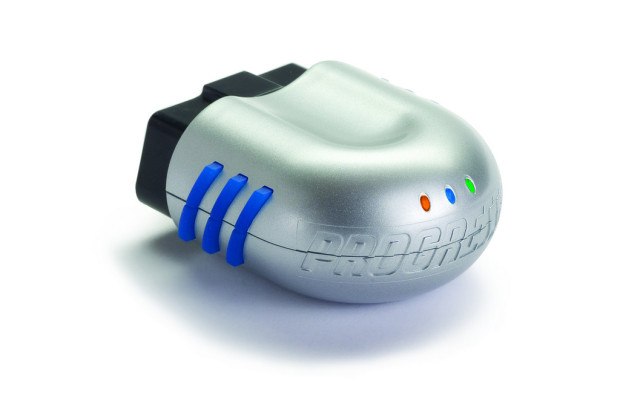A Progressive Insurance Group executive asserts that automated automobile technology won’t become ubiquitous for years. On the other hand, he predicts, the equally transformative use of telematics will grow within a decade into a widely-used tool for auto insurance underwriting.
“The most important thing is that data from telematics devices [deployed for] user-based insurance is, by far, the most predictable variable we have. That is what makes it disruptive,” Tom Hollyer, national product development leader at Progressive, said during a panel discussion on automobile and insurance innovation at the Property Casualty Insurers Association of America (PCI Annual Meeting in Scottsdale, Ariz. on Oct. 27. “We are mining that data every day and developing new insights [and] one thing we are seeing is that customer acceptance is increasing.”
Making the Economics of Telematics Work for Auto Insurers
Telematics, where wireless technology conveys a driver’s behavior to insurers, is “not for everybody,” Hollyer said. “But if good drivers are offered the opportunity to save some money, they will take this up, [and it will be] a material chunk of the market in 10 years.”
Hollyers’s experience and predictions are in line with a recent Towers Watson survey that found U.S. drivers are becoming increasingly comfortable with telematics. In February 2013, just 4.5 percent of consumers either had a UBI policy in force or did at some point in the previous 17 months. That doubled to 8.5 percent as of July 2014, the Towers Watson survey revealed.
Nearly 80 percent of the 1,000 respondents who participated in the survey said they’d buy a UBI policy or would at least consider one. That number rises to 88 percent if insurers can ensure that drivers who do this won’t face higher premiums.
Auto Technology
Auto insurers are also following the evolution of automated automobile technology, such as rearview cameras, crash prevention systems, and even driverless cars tested by Google, GM and others. These disruptive advances will take more time to become ubiquitous than telematics, Hollyer said.
“This is an ongoing decades-long evolution,” he said. “It takes a while for new technology to enter the new vehicle market and then it takes a really long time for those new vehicles to penetrate the install base of new cars.” In other words, Hollyer added, it will be many years “before the new technology gets to even a 50 percent penetration of the install base.”
With that in mind, Hollyer argued that the advance of technology to make cars autonomous won’t upend the insurance industry as quickly as some people think.
“I don’t think there’s any kind of [automobile insurance industry] cliff in the foreseeable future,” Hollyer said during the panel discussion. “There’s a long prediction as to when true autonomous vehicles will be here.”
If Cars Drive Themselves, How Will Actuaries Make Sense of Data to Price the Risks?
Google co-founder Sergey Brin has predicted that the autonomous car technology could be available to the public by 2017.
Auto maker Ford, which is researching autonomous driving technology with Stanford University and the Massachusetts Institute of Technology (MIT), predicts that fully automated driving will be a major part of transportation’s future and hopes to to get there by 2025.
Nissan has plans to sell vehicles that can drive themselves by 2020 or sooner.
The PCI panel also included Steve Kenner, global director of the automotive safety office at Ford Motor Co.; and Richard Schmitzer, president and CEO of James River Insurance Co. Here are some additional related issues the PCI panelists touched upon:
Whether consumers will accept driverless, or nearly autonomous, cars:
Ford already has autonomous technology in new automobile models, including lane keeping systems and other advances. Kenner said fully autonomous vehicles (driverless cars) “is a possible future, especially in controlled urban environments.” As to whether consumers would accept the advance, Kenner said they would, but it will likely take many years before autonomous technology in automobiles becomes commonplace in the U.S.
“People say, ‘Hey, do you have technology with forward collision warning or blind spot warning, and very few people raise their hands,'” Kenner noted. “It will take two to three decades for all vehicles in the U.S. to have those technologies.”
Transportation networking companies:
With the advance of transportation networking companies such as Lyft and Uber, Schmitzer pointed out that their transporation business model (ride sharing) didn’t exist as early as 18 to 24 months ago. Already, he said, these companies have transformed the way people are moved short distances” and have taken a big chunk out of the taxi industry’s business. With such a quick ascendance, insurers should pay attention and develop coverage to fit this new age, Schmitzer said.
“The important thing for us as an industry is to really understand … and educate the public and even state regulators” about what is at stake, he added.
Progress has been made, Schmitzer added, but insurers must work hard “to show that there is solid insurance coverage that is evolving … that plugs the gap between personal auto policy and commercial auto policy.”
“We’ve come a long way but there is still a long way to go,” he said.
How automakers/other innovative companies can enable insurers to complement innovation:
Hollyer said these companies should “be as open as possible about the technology direction” of their platforms and make sure insurers “can anticipate what is coming down the pike” That partnership, he said, could allow for smoother and quicker adoption of disruptive technologies that can also be adequately covered in the insurance marketplace.
Related Articles:





















 Northern California Flooding This Weekend Caused by Heavy Rain, High Tides
Northern California Flooding This Weekend Caused by Heavy Rain, High Tides  Underwriter, Actuary Fears of AI Drop; Work Needed on Collaboration
Underwriter, Actuary Fears of AI Drop; Work Needed on Collaboration  California Workers Comp Combined Ratio for 2024 Highest in 20-Plus Years
California Workers Comp Combined Ratio for 2024 Highest in 20-Plus Years  Why the Middle Market Matters and How Insurers Can Capture It
Why the Middle Market Matters and How Insurers Can Capture It 


















